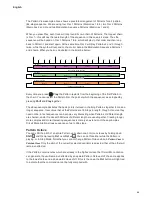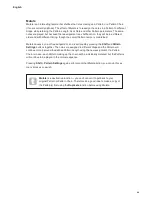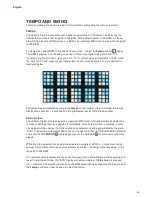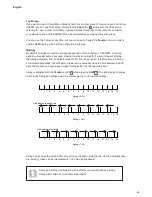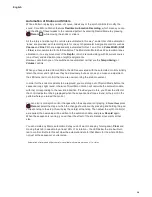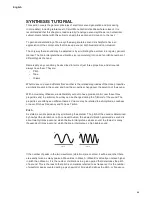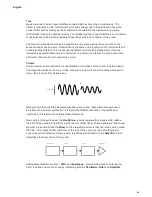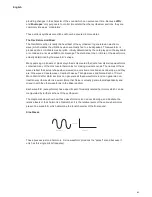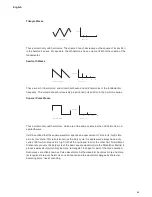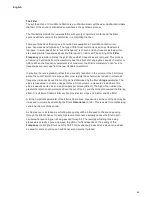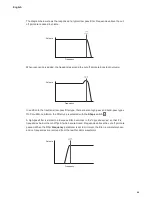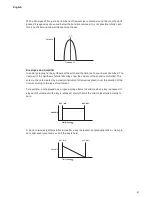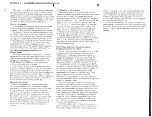
52
English
Duplicating Patterns
In
Patterns View
, the
Duplicate
function can be used to perform a simple copy-and-paste
function, letting you copy a Pattern from one memory to another. This is a very useful feature,
as it lets you use an existing 16-step pattern as the basis for another, slightly different one: it
is often easier to modify an existing Pattern to be how you want it than create a new one from
scratch.
To copy a Pattern, hold down
Shift
15
and press
Clear
13
together (
Clear
lights bright green),
press the pad with the Pattern you want to copy (it lights green while you press it), and then
press the pad corresponding to the memory that should contain the copy (it will light red). You
now have a duplicate of the Pattern in the first memory in the second. If you want to copy the
Pattern data to several memories, you can continue to hold the
Duplicate
button down, and
simply repeat the “paste” part of the operation to the other steps.
Note that you can copy an Osc 1 Pattern to an Osc 2 Pattern memory, or
vice-versa. However, Mod Seq Patterns can only be copied to other Mod Seq
Pattern memories.
Pattern Chains
Once you’ve created several Patterns, you can start to chain them together to make a longer
sequence. You do this on a per-Track basis: to chain four Patterns together on a Track, press
and hold the pad for the lowest-numbered Pattern required and then press the pad for the
highest-numbered Pattern required. For example, if you want to chain the Patterns in memories
3 to 6 together on a Track, hold Pad for memory 3 down and then press the Pad for memory 6.
You’ll see that all four pads now illuminate brightly in the track colour, to confirm that they are all
now part of the chained sequence.
You can form chains of Patterns for Osc 1, Osc 2 and the Modulation Sequencer independently
of each other, or you can just have a chain with Osc 1 Patterns only. Note though that all Tracks
will have an “active” Pattern, and any data in the selected Pattern memory for Osc 2 and the
Modulation Sequencer will be replayed, so if you just want to use Osc 1 on its own, ensure that
the other two Tracks are playing an empty Pattern memory.
IMPORTANT:
Patterns chained together must be contiguous, that is, numerically consecutive.
You can chain Patterns 1, 2, 3 and 4 together on any one Track, or 5, 6 and 7 together, or 4 and
5 together, but you can’t chain 1,2 and 6 together.
The following example illustrates these points.
Pulsing pad indicates
next Pattern to be
played for each Track.
When stopped, the
chain of Patterns
always starts with the
lowest-numbered
Pattern in the chain.
1
2
3
4
1
2
3
4
5
6
7
8
5
6
7
8
9
10
11
12
1
2
3
4
13
14
15
16
5
6
7
8
Osc 1 Patterns
Osc 2 Patterns
Mod Sequence Patterns
Summary of Contents for Circuit Mono Station
Page 1: ......
Page 93: ...93 English...
















